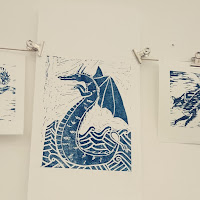Illustrated Menagerie AR Scavenger Hunt/ We Shine Portsmouth 2022
Final preparations are underway for the 3 day festival of art and light, 17th - 19th November 2022
We'll be at 3 locations with 35 illustrations augmented with animation, moving images and sound. One of many installations making up the festival, see the programme and artists at We Shine
Find us at;
Victoria Park (Near Portsmouth and Southsea train station)St. Mary's Church, FrattonMountbatten Centre, Alexandra Park, Hilsea
From 5pm each day
Images shown here by Lily Milan and Jenna Beames
Images shown here by Lily Milan and Jenna Beames





























